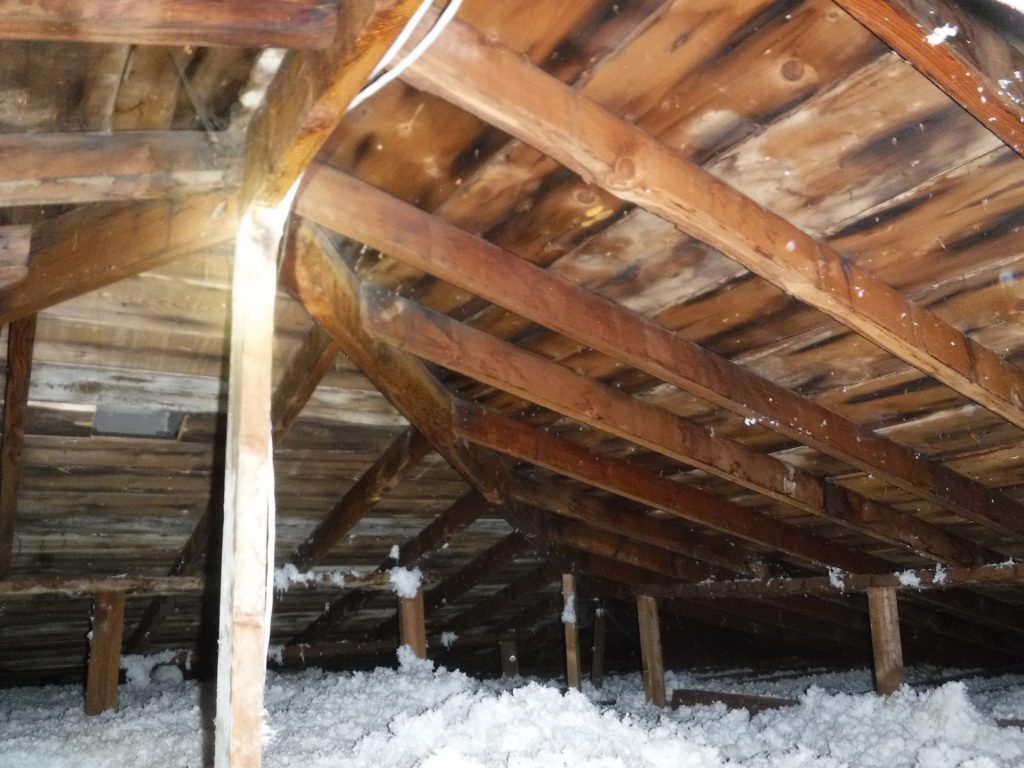Any homeowner will tell you that just when you think things have settled down, your house will surprise you with a curve ball. Most of the time, you’ll be focused on the main floors, structural elements, and utilities, but in the winter months especially, don’t forget to pop open the attic door and see what’s going on up there. With the long cold stretches we get here in Calgary, attic rain can be fairly common.
What is Attic Rain?
Now does this mean that you will open your attic door and find an actual weather event taking place inside the top floor of your home? No. But it can feel that way.
Attic rain is a phenomenon that occurs when warm air meets the extremely cold temperatures of an attic. So, say for example that it’s -25°C outside, thus making it close to -25°C inside your attic. When warm air from the rest of your home seeps into that space, the condensation starts to create frost, which then builds up on the sheathing. The problem with this is that (though it may seem like it) winter doesn’t last forever, and when the temperature begins to rise in the attic, all that frost will begin to melt. Water then seeps into any nook and cranny it can, such as holes holding up the drywall, light fixtures, exhaust fans, etc.
Do you see where the term “attic rain” comes from now?
So, how does warm air get into the attic in the first place?
- Outflow of warm air from the heated levels of your home through light fixtures, the attic hatch, and other areas.
- Vents and ducts that have been accidentally knocked away from their connection to the roof, such as those for bathroom exhaust fans, dryer vents, kitchen vents, etc.
- High interior humidity
- High interior air pressure from winds
- Mechanical pressure from the home’s furnace or HRV
How can you prevent attic rain?
The unfortunate truth is that once warm air has made its way into a cold attic, there’s not much that can be done to prevent attic rain when it melts. Your best course of action is to be proactive in identifying any points of air leakage and address them before issues arise – or at the very least prevent them from happening again. We recommend having a blower door test conducted for this.
A blower door test involves closing all the windows and doors and depressurizing your home using a unique doorway shield that has a large built-in fan. From there, the operator will quantify the amount of air leakage certain areas of your home are allowing. These results allow you to determine where your problems are stemming from and tackle them from there.
Calgary winters are difficult enough to deal with. The last thing you want is to bring the weather inside with you! The good news is that attic rain is very common in our region and there are plenty of resources to help homeowners prevent or recover from this phenomenon. While Accurate Home Inspections does not perform blower door tests, we can certainly recommend a local company to reach out to. Just shoot us an email and we’d be happy to help!



We have a new build home still on warranty. We have attic rain and now have water marks on our ceiling and water dripping from one window casing. Will the new home owner warranty cover a blower door test? Will we now get mold?